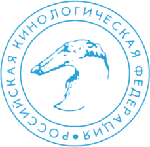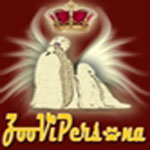Byte (magazine). Byte журнал
Byte (magazine) - Wikipedia
Byte was an American microcomputer magazine, influential in the late 1970s and throughout the 1980s because of its wide-ranging editorial coverage.[1] Whereas many magazines from the mid-1980s had been dedicated to the MS-DOS (PC) platform or the Mac, mostly from a business or home user's perspective, Byte covered developments in the entire field of "small computers and software", and sometimes other computing fields such as supercomputers and high-reliability computing. Coverage was in-depth with much technical detail, rather than user-oriented.
Byte started in 1975, shortly after the first personal computers appeared as kits advertised in the back of electronics magazines. Byte was published monthly, with an initial yearly subscription price of $10. Print publication ceased in 1998 and online publication in 2013.
Foundation[edit]
In 1975 Wayne Green was the editor and publisher of 73 (an amateur radio magazine) and his ex-wife, Virginia Londner Green was the Business Manager of 73 Inc.[2] In the August 1975 issue of 73 magazine Wayne's editorial column started with this item:
The response to computer-type articles in 73 has been so enthusiastic that we here in Peterborough got carried away. On May 25th we made a deal with the publisher of a small (400 circulation) computer hobby magazine to take over as editor of a new publication which would start in August ... Byte.[3]
Carl Helmers published a series of six articles in 1974 that detailed the design and construction of his "Experimenter's Computer System", a personal computer based on the Intel 8008 microprocessor. In January 1975 this became the monthly ECS magazine with 400 subscribers. The last issue was published on May 12, 1975 and in June the subscribers were mailed a notice announcing Byte magazine. Carl wrote to another hobbyist newsletter, Micro-8 Computer User Group Newsletter, and described his new job as editor of Byte magazine.
I got a note in the mail about two weeks ago from Wayne Green, publisher of '73 Magazine' essentially saying hello and why don't you come up and talk a bit. The net result of a follow up is the decision to create BYTE magazine using the facilities of Green Publishing Inc. I will end up with the editorial focus for the magazine; with the business end being managed by Green Publishing.[4]
Virginia Londner Green had returned to 73 in the December 1974 issue and incorporated Green Publishing in March 1975.[5] The first five issues of Byte were published by Green Publishing and the name was changed to Byte Publications starting with the February 1976 issue.[6] Carl Helmers was a co-owner of Byte Publications.[7]
The first four issues were produced in the offices of 73 and Wayne Green was listed as the publisher. One day in November 1975 Wayne came to work and found that the Byte magazine staff had moved out and taken the January issue with them.[8] The February 1976 issue of Byte has a short story about the move. "After a start which reads like a romantic light opera with an episode or two reminiscent of the Keystone Cops, Byte magazine finally has moved into separate offices of its own."
Wayne Green was not happy about losing Byte magazine so he was going to start a new one called Kilobyte.[9]Byte quickly trademarked KILOBYTE as a cartoon series in Byte magazine. The new magazine was called Kilobaud. There was competition and animosity between Byte Publications and 73 Inc. but both remained in the small town of Peterborough, New Hampshire.
The early years[edit]
Articles in the first issue (September, 1975) included Which Microprocessor For You? by Hal Chamberlin, Write Your Own Assembler by Dan Fylstra and Serial Interface by Don Lancaster. Advertisements from Godbout, MITS, Processor Technology, SCELBI, and Sphere appear, among others.
Early articles in Byte were do-it-yourself electronic or software projects to improve small computers. A continuing feature was Ciarcia's Circuit Cellar, a column in which electronic engineer Steve Ciarcia described small projects to modify or attach to a computer (later spun off to become the magazine Circuit Cellar, focusing on embedded computer applications). Significant articles in this period included the "Kansas City" standard for data storage on audio tape, insertion of disk drives into S-100 computers, publication of source code for various computer languages (Tiny C, BASIC, assemblers), and coverage of the first microcomputer operating system, CP/M. Byte ran Microsoft's first advertisement, as "Micro-Soft", to sell a BASIC interpreter for 8080-based computers.
Growth and change[edit]
In spring of 1979, owner/publisher Virginia Williamson sold Byte to McGraw-Hill. She remained publisher until 1983 and became a vice president of McGraw-Hill Publications Company. Shortly after the IBM PC was introduced, in 1981, the magazine changed editorial policies. It gradually de-emphasized the do-it-yourself electronics and software articles, and began running product reviews, the first computer magazine to do so[citation needed]. It continued its wide-ranging coverage of hardware and software, but now it reported "what it does" and "how it works", not "how to do it". The editorial focus remained on home and personal computers).
By the early 1980s Byte had become an "elite" magazine, seen as a peer of Rolling Stone and Playboy, and others such as David Bunnell of PC Magazine aspired to emulate its reputation and success.[10] It was the only computer publication on the 1981 Folio 400 list of largest magazines. Byte's 1982 average number of pages was 543, and the number of paid advertising pages grew by more than 1,000 while most magazines' amount of advertising did not change. Its circulation of 420,000 was the third highest of all computer magazines.[11]Byte earned $9 million from revenue of $36.6 million in 1983, twice the average profit margin for the magazine industry. It remained successful while many other magazines failed in 1984 during economic weakness in the computer industry. The October 1984 issue had about 300 pages of ads sold at an average of $6,000 per page.[12]
From 1975 to 1986 Byte covers usually featured the artwork of Robert Tinney. These covers made Byte visually unique. In 1987 Tinney's paintings were replaced by product photographs, and Steve Ciarcia's "Circuit Cellar" column was discontinued.
Around 1985 Byte started an online service called BIX (Byte Information eXchange) which was a text-only BBS style site running on the CoSy conferencing software, also used by McGraw-Hill internally.[citation needed] Access was via local dial-in or, for additional hourly charges, the Tymnet X.25 network. Monthly rates were $13/month for the account and $1/hour for X.25 access. Unlike CompuServe, access at higher speeds was not surcharged. Later, gateways permitted email communication outside the system.
By 1990 the magazine was about half an inch in thickness and had a subscription price of $56/year. Around 1993 Byte began to develop a web presence. It acquired the domain name byte.com and began to host discussion boards and post selected editorial content.
Editions were published in Japan, Brazil, Germany, and an Arabic edition published in Jordan.
End of the printed magazine, and online publication[edit]
The readership of Byte and advertising revenue were declining when McGraw-Hill sold the magazine to CMP Media, a successful publisher of specialized computer magazines in May 1998.[13] The magazine's editors and writers expected its new owner to revitalize Byte but CMP ceased publication with the July 1998 issue, laid off all the staff and shut down Byte's rather large product-testing lab.[14][15]
Publication of Byte in Germany and Japan continued uninterrupted. The Turkish edition resumed publication after a few years of interruption. The Arabic edition also ended abruptly.[16]
Many of Byte's columnists migrated their writing to personal web sites. One was science fiction author Jerry Pournelle's weblog The View From Chaos Manor[17] derived from a long-standing column in Byte, describing computers from a power user's point of view. After the closure of Byte magazine, Pournelle's column continued to be published in the Turkish editions of PC World, which was soon renamed as PC Life in Turkey. Byte Japan, with the name licensed from McGraw Hill, was the leading computer magazine in Japan, Published by Nippon Business Publications. It continued Pournelle's column in translation as a major feature for years after Byte closed in the U.S.
In 1999 CMP revived Byte as a web-only publication, from 2002 accessible by subscription. It closed in 2009.[16]
UBM TechWeb brought the Byte name back when it officially relaunched Byte as Byte.com on 11 July 2011. According to the site, the mission of the new Byte was:
"...to examine technology in the context of the consumerization of IT. The subject relates closely to important IT issues like security and manageability. It's an issue that reaches both IT and users, and it's an issue where both groups need to listen carefully to the requirements of the other: IT may wish to hold off on allowing devices and software onto the network when they haven't been properly tested and can't be properly supported. But the use of these devices in the enterprise has the air of inevitability for a good reason. They make users more productive and users are demanding them."[18]
The Byte.com launch editor-in-chief was tech journalist Gina Smith. On September 26, 2011 Smith was replaced by Larry Seltzer. In January 2012 American science fiction and horror author F. Paul Wilson began writing for byte.com, mostly in the persona of his best-known character Repairman Jack.[18]
Byte.com closed in 2013. Byte.com redirects to the website of InformationWeek, a sister technology magazine also published by UBM TechWeb.
References[edit]
- ^ Valery, Nicholas (May 19, 1977). "Spare a byte for the family". New Scientist. Vol. 74 no. 1052. London: Reed Business Information. pp. 405–406. ISSN 0262-4079. "Byte magazine, the leading publication serving the homebrew market ..."
- ^ Green, Wayne (December 1974). "73 Staff". 73 Amateur Radio (179): 4. Virginia Londner Green was listed as Business Manager.
- ^ Green, Wayne (August 1975). "Never Say Die". 73 Amateur Radio (179): 2.
- ^ Singer, Hal; John Craig (June 27, 1975). "News". Micro-8 Computer User Group Newsletter. Lompoc, CA: Cabrillo Computer Center. 1 (8): 1. File:Micro-8 June 27 1975.png
- ^ "Business Name History". BYTE Publications and Green Publishing. New Hampshire Corporate Division. December 27, 1996. Retrieved March 10, 2013. Green Publishing, Inc. was incorporated on March 7, 1975.
- ^ Copyright catalogs at the Library of Congress for Byte magazine.
- ^ "Statement of Ownership, Management and Circulation". Byte. Peterborough, NH: Byte Publications. 2 (12): 184. December 1977. Virginia Peschke and Carl Helmers are the owners of Byte Publications.
- ^ Carlson, Walter (January 1985). "Green: a shade ahead of the market - Wayne Green". Folio: The Magazine for Magazine Management. Green relates that when he arrived at the office one day in November 1975, when the fifth issue was in the works, he found that everything had been moved out--the shoeboxes, the back issues, the articles and the bank account--by his general manager, who also happened to be his first wife, from whom he was divorced in 1965.
- ^ "All About kilobyte". 73 Amateur Radio (194): 118–119. December 1976. Two page ad describing the new KILOBYTE magazine.
- ^ Bunnell, David (February–March 1982). "Flying Upside Down". PC Magazine. p. 10. Retrieved 20 October 2013.
- ^ "Boom in Computer Magazines". The New York Times. 1983-11-09. Retrieved 2011-02-25.
- ^ Berg, Eric N. (1984-09-08). "The Computer Magazine Glut". The New York Times. ISSN 0362-4331. Retrieved 2017-07-03.
- ^ "CMP Media Inc. History". Funding Universe. Retrieved December 6, 2015.
- ^ "McGraw-Hill to Sell Information Group to CMP Media". The New York Times. Reuters. May 6, 1998. p. D.3. The McGraw-Hill Companies agreed yesterday to sell its Information Technology and Communications Group, which includes Byte and other computer magazines, to CMP Media Inc. for $28.6 million.
- ^ Napoli, Lisa (June 1, 1998). "New Owners of Byte Suspend Publication". The New York Times. p. D.4. Byte's circulation has fallen to a recent average of 442,553 from 522,795 in 1996. Advertising has also fallen. In January, for example, Byte published only 61.5 ad pages, less than half the number of pages the magazine had in 1996.
- ^ a b Tom's Unofficial Byte FAQ:The Death of Byte Magazine, by former Byte journalist Tom R. Halfhill, on his personal website
- ^ "The View From Chaos Manor". Jerry Pournelle. June 25, 2011. Retrieved June 8, 2014.
- ^ a b "Byte: Consumer Technology in Business". Informationweek. Retrieved June 8, 2014.
Further reading[edit]
External links[edit]
en.wikipedia.org
Байт (журнал) • ru.knowledgr.com
Журнал Byte был американским микрокомпьютерным журналом, влиятельным в конце 1970-х и в течение 1980-х из-за его всестороннего редакционного освещения. Принимая во внимание, что много журналов с середины 1980-х были посвящены MS-DOS (PC) платформа или Mac, главным образом от бизнеса или перспективы домашнего пользователя, Байт покрыл события во всей области «маленьких компьютеров и программного обеспечения», и иногда других вычислительных областях, таких как вычисление высокой надежности и суперкомпьютеры. Освещение было всесторонним с большим количеством технической детали, а не ориентированное пользователями. Публикация печати прекратилась в 1998 и публикация онлайн в 2013.
Байт начался в 1975, вскоре после того, как первые персональные компьютеры появились как комплекты, рекламируемые позади журналов электроники. Байт был издан ежемесячно с начальной ежегодной подписной ценой 10$.
Фонд
В 1975 Уэйн Грин был редактором и издателем 73 (любительский радио-журнал) и его бывшая жена, Вирджиния Лонднер Грин была Управляющим делами 73 Inc. В номере в августе 1975 73 журналов редакционная колонка Уэйна начался с этого пункта:
Карл Хелмирс опубликовал ряд из шести статей в 1974, которые детализировали проектирование и строительство Компьютерной системы его «Экспериментатора», персональный компьютер, основанный на микропроцессоре Intel 8008. В январе 1975 это стало ежемесячным журналом ECS с 400 подписчиками. Последняя проблема была издана 12 мая 1975, и в июне подписчикам отправили по почте уведомление, объявляющее о журнале BYTE. Карл написал другому информационному бюллетеню человека, увлеченного своим хобби, микро8 Информационным бюллетеням Computer User Group, и описал свою новую работу в качестве редактора журнала Byte.
Вирджиния Лонднер Грин возвратилась к 73 в номере в декабре 1974 и включила Green Publishing в марте 1975. Первые пять проблем Байта были изданы Green Publishing, и название было изменено на Публикации Байта, начинающиеся с номера в феврале 1976. Карл Хелмирс был совладельцем Публикаций Байта.
Первые четыре проблемы были произведены в офисах 73, и Уэйн Грин был перечислен как издатель. Однажды в ноябре 1975 Уэйн приехал в работу и нашел, что штат журнала Byte съехал и взял январский номер с ними. У номера в феврале 1976 Байта есть рассказ о движении. «После того, как начало, которое читает как романтичная оперетта с эпизодом или двумя напоминающими из Полицейских Краеугольного камня, журнал Byte наконец, переместилось в отдельные собственные офисы».
Уэйн Грин не был доволен проигрывающим журналом Byte, таким образом, он собирался начать нового под названием Килобайт. Байт быстро регистрировал КИЛОБАЙТ КАК ТОРГОВУЮ МАРКУ как мультипликационный ряд в журнале Byte. Новый журнал назвали Килобод. Было соревнование и враждебность между Публикациями Байта и 73 Inc., но оба остались в небольшом городе Питерборо, Нью-Хэмпшир.
Первые годы
Байт смог привлечь рекламу и статьи от многих хорошо-knowns, скоро быть хорошо knowns, и в конечном счете быть forgottens в растущем микрокомпьютерном хобби. Статьи в первой проблеме (сентябрь 1975), включенный, Который Микропроцессор Для Вас? Хэлом Чемберлином Напишите Свой Собственный Ассемблер Дэном Филстрой и Последовательный Интерфейс Доном Ланкастером. Рекламные объявления от Godbout, MITS, Технологии Процессора, SCELBI и Сферы появляются среди других.
Ранние статьи в Байте были электронным «сделай сам» или проекты программного обеспечения улучшить маленькие компьютеры. Продолжающейся особенностью был Подвал Схемы Сиарсии, колонка, в которой инженер-электроник Стив Сиарсия описал маленькие проекты изменить или свойственным компьютеру (позже произошел, чтобы стать журналом Circuit Cellar, сосредотачивающимся на вложенных компьютерных приложениях). Значительные статьи в этот период включали стандарт «Канзас-Сити» для хранения данных на аудиокассете, вставке дисководов в компьютеры S-100, публикацию исходного кода для различных компьютерных языков (Крошечный C, ОСНОВНОЙ, ассемблеры), и освещение первой микрокомпьютерной операционной системы, CP/M. Байт управлял первой рекламой Microsoft, как «Microsoft», чтобы продать ОСНОВНОГО переводчика за компьютеры на основе 8080.
Рост и изменение
Весной 1979 года владелец/издатель Вирджиния Уллиамсон продал БАЙТ McGraw-Hill. Она осталась издателем до 1983 и стала вице-президентом McGraw-Hill Publications Company. Вскоре после того, как ПК IBM-PC был введен, в 1981, журнал изменил редакционную политику. Это постепенно преуменьшало роль самостоятельной электроники и статей программного обеспечения, и начинало бегущие отзывы о продукции, первый компьютерный журнал, чтобы сделать так. Это продолжало свое всестороннее освещение аппаратного и программного обеспечения, но теперь это сообщило, «что это делает» и, «как это работает», не, «как сделать это». Редакционный центр остался на любой компьютерной системе или программном обеспечении, которое могло бы быть в пределах финансов и интереса типичного человека (сосредоточено на домашних и персональных компьютерах).
К началу БАЙТА 1980-х стал «элитным» журналом, рассмотренным как пэр Бродяги и Плэйбоя, и другие, такие как Дэвид Баннелл Журнала PC стремились подражать его репутации и успеху. Это была единственная компьютерная публикация по Фолианту 1981 года 400 списков самых больших журналов. Среднее количество страницы БАЙТОВ 1982 года 543 было большей частью любого журнала, и число заплаченных рекламных страниц выросло на больше чем 1 000, в то время как сумма большинства журналов рекламы не изменялась. Его обращение 420 000 было третьим по высоте из всех компьютерных журналов.
От 1 975до1986байтовых покрытий обычно показывал произведение искусства Роберта Тинни. Эти покрытия сделали Байт визуально уникальным. В 1987 картины Тинни были заменены фотографиями продукта, и «колонка» Подвала Схемы Стива Сиарсии была прекращена.
Приблизительно 1 985 байтов начали обслуживание онлайн под названием BIX (Обмен информации о байте), который был местом стиля BBS только для текста, бегущим на программном обеспечении конференц-связи CoSy, также используемом McGraw-Hill внутренне. Доступ был через местный коммутируемый доступ или, для дополнительных почасовых обвинений, сети Tymnet X.25. Месячные показатели составляли $13/месяцев для счета и $1/час для доступа X.25. В отличие от CompuServe, не был перегружен доступ на более высоких скоростях. Многие сотрудники Байта были активны на обслуживании. Позже, ворота разрешили переписку по электронной почте вне системы.
Байт продолжал расти. К 1990 это был ежемесячный журнал приблизительно дюйм в толщине, читателях технических профессионалов, и подписной цене $56/лет, высоком числе на время. Это был «обязательный для чтения» журнал популярных компьютерных журналов. Приблизительно 1 993 байта начали развивать веб-присутствие. Это приобрело доменное имя byte.com и начало принимать форумы, и почта выбрала редакционное содержание.
Это развило много национальных родственных выпусков в Японии, Бразилии, Германии и арабском выпуске, изданном в Иордании.
Конец печатного журнала и публикации онлайн
Читатели Байта и дохода от рекламы уменьшались, когда McGraw-Hill продал журнал СМИ CMP, успешному издателю специализированных компьютерных журналов в мае 1998. Редакторы и писатели журнала ожидали, что его новый владелец оживит Байт, но CMP прекратил публикацию с номером в июле 1998, уволил весь штат и закрыл довольно крупную проверяющую продукт лабораторию Байта.
Публикация Байта в Германии и Японии продолжалась непрерывный. Турецкий выпуск возобновил публикацию после нескольких лет прерывания. Арабский выпуск также закончился резко.
Многие обозреватели Байта мигрировали свое письмо личным веб-сайтам. Самым популярным из них был, вероятно, блог писателя-фантаста Джерри Поернелла Представление Из Поместья Хаоса, полученного на основании давней колонки в Байте, описывая компьютеры с точки зрения продвинутого пользователя. После закрытия журнала Byte колонка Джерри Поернелла продолжала издаваться в турецких выпусках Мира PC, который был скоро переименован как ЖИЗНЬ PC в Турции. БАЙТ Япония, с именем, лицензируемым от Макгроу Хилла, был ведущим компьютерным журналом в Японии, Изданной Японскими Деловыми изданиями. Это продолжало колонку Джерри Поернелла в переводе как основная функция в течение многих лет после БАЙТА закрытые США.
В 1999 CMP восстановил Байт как публикацию только для сети, с 2002 доступную по подписке. В 2009 это закрылось.
UBM TechWeb возвратил имя Байта, когда это официально повторно начало Байт как Byte.com 11 июля 2011. Согласно месту, миссия нового Байта была:
Запуском Byte.com редактор была техническая журналистка Джина Смит. 26 сентября 2011 Смит был заменен Ларри Селцером. В январе 2012 американская научная фантастика и автор ужаса Ф. Пол Уилсон начали писать для byte.com, главным образом в персоне его самого известного Ремонтника характера Джека. В 2013 Byte.com закрылся.
См. также
Дополнительные материалы для чтения
Внешние ссылки
- VC&G интервью: Роберт Тинни, художник покрытия байта и микрокомпьютерный пионер иллюстрации
ru.knowledgr.com
Free Download eBooks Search Engine!
All...eBook Categories & Tags
Author / Readers / TimeRecently Viewed eBooks:
- 0 / 04:42SonicCouture Crowd Choir MULTiFORMAT DVDR-DYNAMiCS (PC/MacOSX)
- 261 / 04:42Журнал: «BYTE/Россия» №02 (112), Февраля [2008, DjVu]
- 0 / 04:42[Share-2017] Clinical Vignettes for the USMLE Step 2 2nd ed (McGraw-Hill, 2001)
- 0 / 04:42Mastering Skills for the TOEFL iBT, 2nd Edition Advanced Speaking (Audio book)
- 0 / 04:42Fundamentals and Applications of Microfluidics.
- 0 / 04:42[PDF] Tools of Chemistry Education Research (ACS Symposium Series)
- 5 / 04:42The Idea Accelerator: How to Solve Problems Faster Using Speed Thinking
- 0 / 04:42Systema : Wrestling Fundamentals by Mikhail Ryabko
- by Brian McDonald, Shawn McGehee, Rodney Landrum / 0 / 04:42Pro SQL Server 2012 Reporting Services, 3rd Edition - eazydoc.com
- 0 / 04:42French An Essential Guide to French Language Learning
ReadersTop10 eBooks:
- 4712150GB ebooks, mp3, videos and games free download!
- 3668Free ebooks, MP3, Videos and Games downlaod!
- 3500[share_ebook] PLEX, a Manual: Your Media, With Style
- 3479Global Finance Free Subscription
- 3058A Computer Geek's Smart Productivity Guide, Free Makeuseof.com eBook
- 2685The Windows 7 Guide: From Newbies to Pros
- 2430The Mac Manual
- 2206The Principles Of Project Management - Free 66 Page Preview
- 2047The GNU/Linux Advanced Administration
- 1893A Newbie's Getting Started Guide to Linux
PostsTop10 Users:
- 444262luongquocchinh
- 160645manhneovn
- 51128everest555
- 50236pherick
- 30464nobihai
- 14434BaDshaH786
- 135206_1_9
- 11427voska89
- 11422onno
- 7610enterprises113
Recent PostsActive Users:
- 405everest555
- 226manhneovn
- 206BaDshaH786
- 84perica123
- 37fubber
- 30enterprises113
- 7iceblue
- 5flint555
AddedLatest Added eBooks:
- 2018-03-27Macroplant iExplorer 4.1.19.24363
- 2018-03-27Anywhere Software Basic4Android 8.00
- 2018-03-26Jason Capital - Attraction King
- 2018-03-26Detox Dudes - Premium Video Coaching Program
- 2018-03-26Daygame.com - Yads Ultimate Texting Formula Webinar
- 2018-03-26Georges Moreau - Le monde des prisons
- 2018-03-26Learn Ruby on Rails - Build a Craigslist Clone
- 2018-03-26French Tenses Simplified: Master the 10 Main Tenses Quickly!
- 2018-03-26Learn Jazz Piano Fast - A Lifehacker's Guide to Jazz Mastery
- 2018-03-26Pluralsight - Linux Command Line Interface (CLI) Fundamentals
- 2018-03-26CBT Nuggets - Project Management Professional (PMP) 2016
- 2018-03-26Infinite Skills - Learning Oracle 11g - Real Application Clusters Training Video
- 2018-03-26ToolsToo 7.1.0.0
- 2018-03-26Google Docs for Teachers
- 2018-03-26Predicting Security Threats with Splunk: Getting to Know Splunk
- 2018-03-26InterestingTalks - Psychology
- 2018-03-26CFA Program Curriculum 2018 Level III Volumes 1-6 Box Set
- 2018-03-26Learning AWS - Second Edition
- 2018-03-26Producers Vault Latin Urban v1.5 VSTi WiN 32/64 bit
- 2018-03-26Master of the Mysteries: New Revelations on the Life of Manly Palmer Hall
- 2018-03-26The Style System by Antonio Centeno
- 2018-03-26TTC Video - Life in the World's Oceans
- 2018-03-26Import Testing and Techniques with Dave Scaler
- 2018-03-26Lost Vanguard: Russian Modernist Architecture 1922-1932
- 2018-03-26Mastering Unity Scripting
- 2018-03-26Cocos2d Cross-Platform Game Development Cookbook - Second Edition
- 2018-03-26The Clean Change: Foundations
- 2018-03-26HMI - Hypnosis Motivation Institute - Advanced Hynotherapy Training Courses
- 2018-03-26Adobe After Effects CC For Beginners: Learn After Effects CC
- 2018-03-26RevisionFX SmoothKit 3.3.5 for After Effects
More eBooks ...
35988 pages, 3598794 eBooks in total, list all pages->Recommend Ebookee
More Categories
Email Subscribe
Feed & Bookmark
Sponsored Links
We Recommend
ebookee.org













